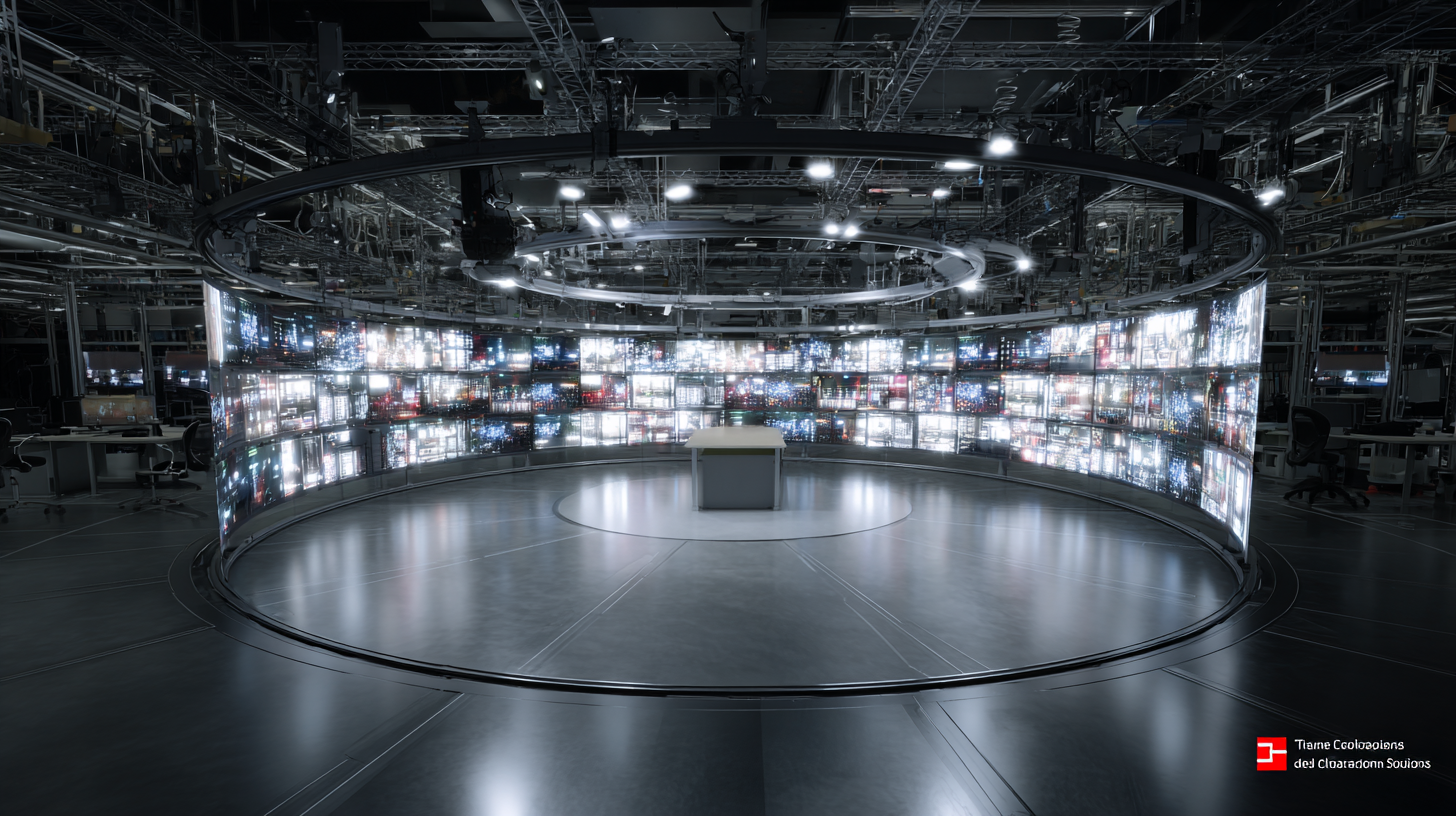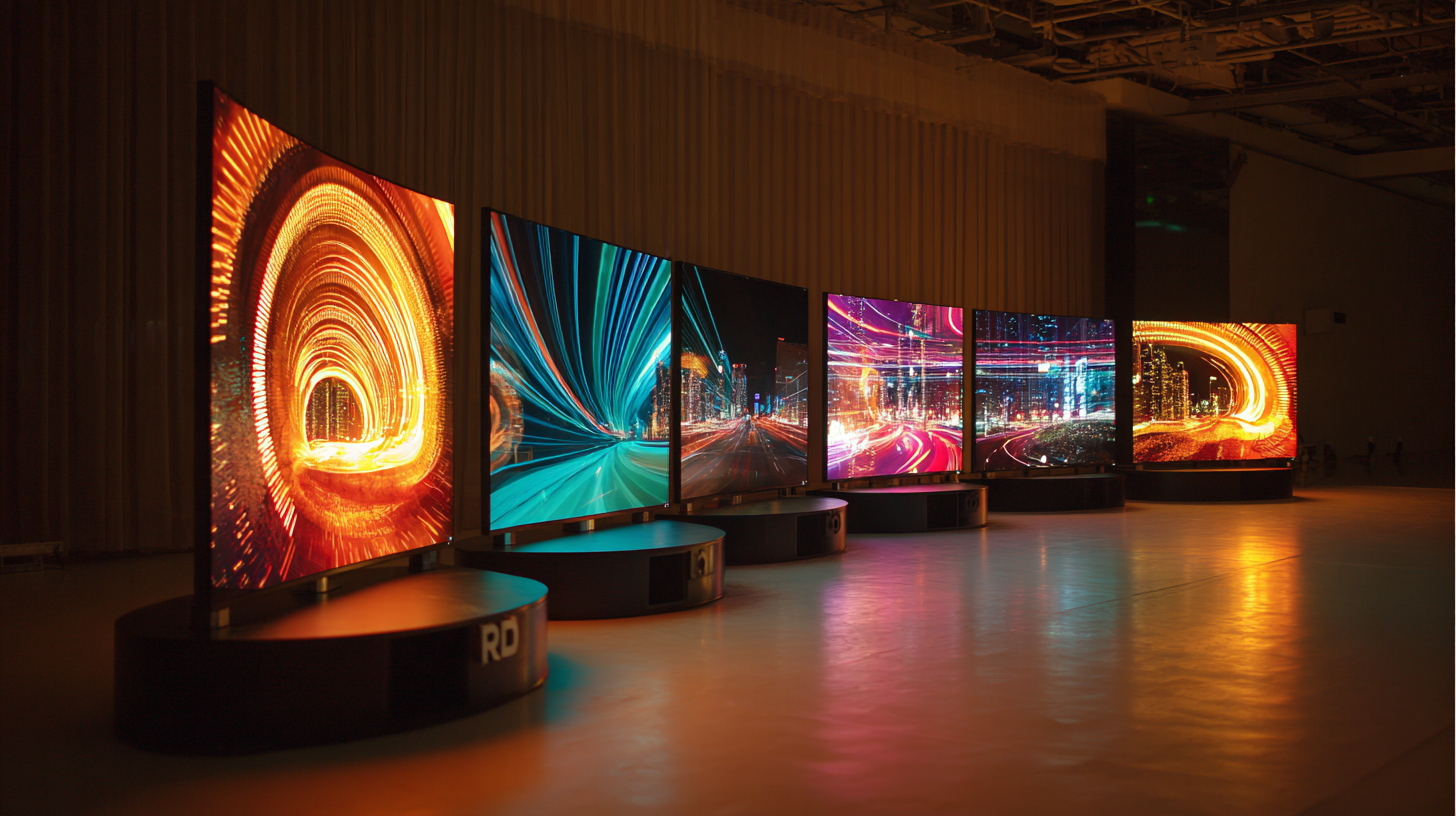In today's rapidly evolving technological landscape, the demand for high-quality display solutions is at an all-time high. Circular LCD screens, known for their versatility and innovative design, are increasingly being recognized as a significant player in the market. According to a recent report by the Research and Markets group, the global LCD screen industry is projected to grow by 5.6% annually, with a notable surge in the adoption of specialty display formats like circular screens. Made in China, these advanced circular LCD screens not only meet international quality standards but also feature cutting-edge technology that enhances user experience across various applications—from consumer electronics to automotive interfaces. As the industry pivots towards sustainability and efficiency, understanding the challenges and opportunities associated with circular LCD screens becomes crucial for stakeholders aiming to elevate global standards in display technology.

In today's fast-evolving technology landscape, the significance of global standards in circular LCD screen production cannot be overstated. These standards ensure that manufacturers adhere to consistent quality benchmarks, enhancing the performance and durability of products. By setting a universal framework, stakeholders can facilitate smoother trade and innovation while safeguarding consumer interests. As China emerges as a leader in this sector, its commitment to adhering to international quality standards demonstrates its dedication to producing reliable and high-quality circular LCD screens.
Moreover, global standards play a crucial role in fostering sustainability within the manufacturing process. By implementing efficient production techniques and materials, manufacturers can reduce waste and energy consumption, thereby minimizing their environmental impact. In this context, China's investment in advanced technologies and sustainable practices is pivotal. By creating circular LCD screens that meet or exceed international expectations, Chinese manufacturers are not only elevating their product offerings but also contributing to a greener future in electronic manufacturing. Through such efforts, the importance of global standards becomes clear, as they drive both innovation and responsibility in the industry.
| Parameter | Value | Global Standard Compliance |
|---|---|---|
| Screen Size | 5.5 inches | Yes |
| Resolution | 1920 x 1080 | Yes |
| Aspect Ratio | 16:9 | Yes |
| Refresh Rate | 60 Hz | Yes |
| Response Time | 5 ms | Yes |
| Brightness | 500 cd/m² | Yes |
| Color Gamut | sRGB 100% | Yes |
In the rapidly evolving LCD screen industry, export and import certifications play a critical role in ensuring product quality and compliance with international standards. According to a report by the International Data Corporation (IDC), the global LCD market is expected to reach approximately $100 billion by 2025, with China being a major player due to its advanced manufacturing capabilities. With such significant growth, adhering to relevant certifications such as CE, RoHS, and ISO 9001 becomes essential for manufacturers to gain trust and facilitate smooth international trade.
Certification processes involve rigorous testing and evaluation, ensuring that products meet safety and environmental regulations. For instance, the RoHS directive restricts hazardous substances in electronic devices, which has become an industry standard in Europe. A 2022 market analysis indicated that products with recognized certifications benefited from a 20% increase in export opportunities, highlighting the competitive edge these certifications afford to manufacturers. As China continues to innovate and elevate its production standards, understanding and obtaining these certifications will not only enhance global trade relations but also position Chinese manufacturers at the forefront of the LCD screen market.

In a world driven by innovation, the pursuit of quality and sustainability in technology remains paramount. High-quality circular LCD screens made in China exemplify this trend, showcasing advanced craftsmanship and state-of-the-art features. Notably, these screens offer impressive color accuracy, durability, and energy efficiency, making them ideal for a variety of applications ranging from consumer electronics to sophisticated industrial uses. The engineering behind them embodies a commitment to elevating global standards, ensuring that they meet and exceed international benchmarks.
The recent achievements in China's space exploration initiatives, including the announcement of the lunar rover design inspired by historical Chinese artifacts, reflect a similar ethos of merging tradition with modern innovation. Just as the lunar rover "望舒之辇" draws from the legacy of ancient China, the circular LCD screens leverage centuries of craftsmanship to redefine modern display technology. This fusion of heritage and cutting-edge design not only enhances product functionality but also reinforces China's position as a leader in the global tech landscape, allowing contemporary designs to pay homage to cultural roots.
In the realm of international trade, navigating the labyrinth of compliance certifications is essential for businesses looking to export circular LCD screens crafted in China. These screens not only embody cutting-edge technology but also demand adherence to a myriad of global standards. From safety regulations to environmental considerations, manufacturers must ensure that their products meet rigorous requirements to gain market access in various countries.
Key certifications such as CE, ROHS, and UL play a pivotal role in affirming product quality and safety. The CE mark signifies compliance with European health and safety standards, while ROHS ensures that hazardous substances are limited, thereby promoting environmental sustainability.UL certification not only highlights that the product meets safety guidelines in the US but also builds trust with consumers and partners alike. For Chinese manufacturers, achieving these certifications facilitates smoother entry into competitive markets, fostering relationships built on trust and accountability.

The rise of circular LCD technology marks a significant shift in the display market, with Chinese manufacturers leading the charge in innovation and production. According to a recent report by MarketsandMarkets, the global LCD screen market is projected to reach $139.83 billion by 2025, growing at a CAGR of 5.7%. Within this sector, circular LCD screens are emerging as a preferred choice for various applications, from automotive displays to smart home devices, due to their aesthetic appeal and versatility.
Chinese manufacturers have invested heavily in research and development, resulting in cutting-edge technologies that enhance the performance and durability of circular LCD screens. For instance, the adoption of advanced backlight technologies, such as edge-lit and direct-lit configurations, has improved brightness and energy efficiency, catering to the rising consumer demand for eco-friendly products. Additionally, companies like BOE Technology Group and LG Display are at the forefront of this innovation, often providing displays with higher resolutions and improved color accuracy. With these advancements, China continues to solidify its position as a powerhouse in the global circular LCD market, setting new benchmarks for quality and performance.
